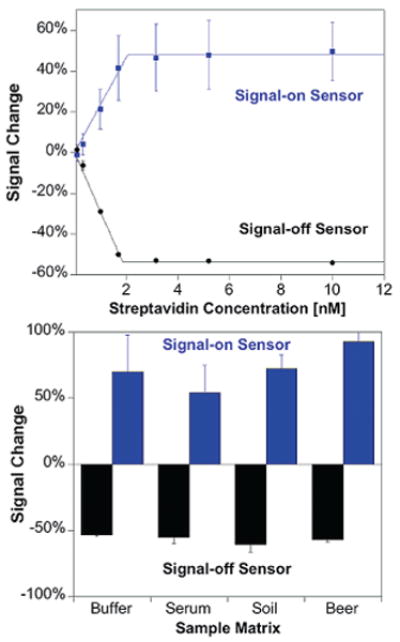Figure 3.

Both the signal-on and signal-off streptavidin sensors achieve subnanomolar detection limits and are able to function in complex samples. Shown on the top are titrations of signal-on (23S17B3) and signal-off (19B5) streptavidin sensors in buffer (the biphasic nature of the curves arises due to the subnanomolar dissociation constant of the streptavidin–biotin interaction). The sensors function comparably in complex samples such as blood serum, soil suspensions, and beer (bottom), yielding similar signals upon addition of saturating (30 nM) streptavidin target. The error bars in this and the following figure represent the standard deviations of measurements conducted using three separately fabricated electrodes. The signal-on construct has large electrode-to-electrode variability in gain, although detection limits are similar for each individual electrode. (Figure S7 presents titration data for individual electrodes.)
